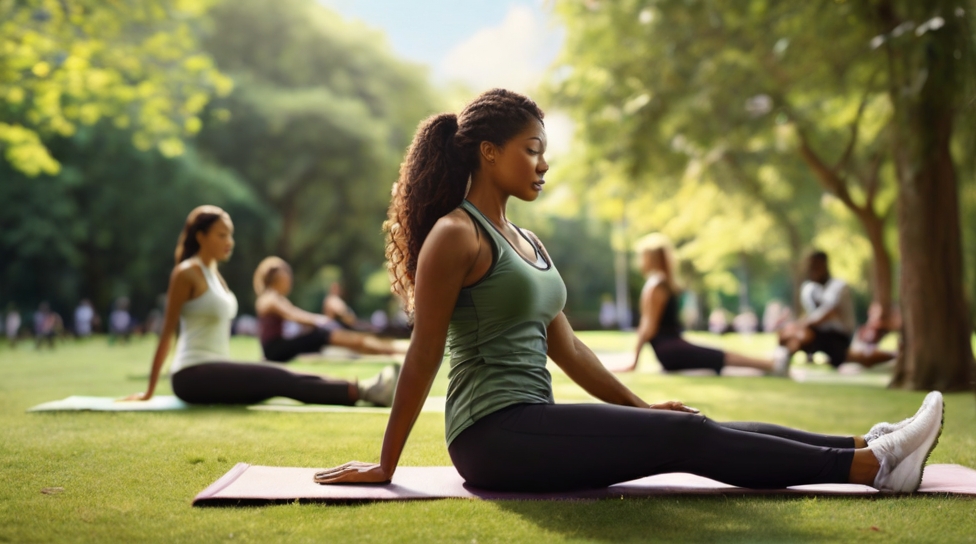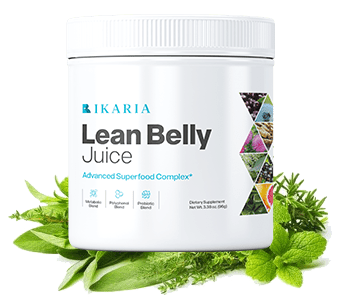
Embracing a routine that includes stretching exercises is fundamental for those aiming to improve flexibility and avoiding discomfort or injury during the day’s activities. Whether you’re a fitness aficionado or just starting to prioritize your physical health, stretching is crucial. Ideal stretching routines encompass a wide scope of flexibility exercises suitable for all levels, including beginners and athletes alike. Even if you’ve just embarked on a fitness journey or are looking to prevent injury, stretching is a non-negotiable aspect of a healthy lifestyle.
Implementing daily stretches can offer significant relief for tight muscles, contributing to a more supple and resilient body. Stretching for flexibility isn’t just for those involved in athletic pursuits—it’s essential for anyone who wants to maintain their muscle health and prevent common strains or sprains. Likewise, engaging in light stretching before beginning any form of exercise can warm up the muscles, making them less prone to injury.
For individuals new to fitness, stretching for beginners is accessible, offering step-by-step progress toward greater mobility. Not only is it beneficial for injury prevention, but it also serves as an excellent means to condition the body before taking on more intensive physical challenges. Hence, uncovering the ideal stretching techniques tailored to your lifestyle and fitness level is a boon to your long-term health and muscular well-being.
Key Takeaways
- Beginning a stretching routine is imperative for maintaining and enhancing flexibility.
- Stretching benefits range from warmed-up muscles to decreased risk of injury, making it essential before exercise.
- Flexibility exercises are inclusive, serving the needs of both beginners and seasoned athletes.
- Regular stretching can ameliorate tight muscles, promoting overall fitness and functional mobility.
- Stretching for athletes or active individuals helps in optimizing performance and injury prevention.
- Implementing ideal stretching techniques can lead to a healthier, more flexible body.
The Importance of Incorporating Stretching Exercises in Your Routine
Embracing a stretching routine is not only beneficial; it’s a critical component of maintaining and enhancing flexibility and range of motion. Stretching’s preventative and restorative powers can lead to significant health dividends. Daily stretching exercises can reduce pain, particularly in the lower back, and help to manage and prevent low back pain. When advised by a physical therapist, stretches tailored to your needs can become a powerful tool in your wellness arsenal.
How Stretching Prevents Injury and Improves Flexibility
The potential of stretching exercises to prevent injury and increase flexibility is immense. Consistent practice not only improves mobility but also prepares the body for the demands of daily activities and physical exertion. Engaging in a warm-up that involves dynamic stretching involves motion and prepares the muscles for the stress of exercise, which can significantly help improve performance and reduce the risk of injury.
Maximizing Muscle Recruitment and Range of Motion Through Stretching
Stretching also plays a crucial role in maximizing muscle recruitment during physical activity. When muscles are more pliable and stretched, they can achieve a more comprehensive range of motion, leading to improved movements and efficacy in all forms of exercise. Benefits of stretching include the ability to engage more muscle fibers, which can contribute to greater muscular balance and performance.
Reversing Muscle Shortening from Sedentary Lifestyles
Our modern lifestyles often confine us to habitats that contribute to muscle shortening, particularly around the lower back and hip regions. Over time, this can lead to discomfort and reduce flexibility and induce pain. By undertaking regular stretching exercises, it’s possible to not only counter these adverse effects but stretching can help reverse the damage by elongating the muscles and improving posture.
| Stretching Type | Benefits | Recommended for |
|---|---|---|
| Dynamic Stretching | Increases blood flow, prepares the body for exercise | Athletic warm-up, pre-workout |
| Static Stretching | Improves flexibility, relaxes muscles | Post-workout, flexibility training |
| Functional Stretching | Enhances specific movement patterns, reduces pain | Physical therapy, injury rehabilitation |
Implementing a stretching routine not only aids in maintaining a healthy range of motion but also ensures lasting benefits that permeate every aspect of daily living. Stretching exercises to enhance daily flexibility are a cornerstone of any fitness program and an investment in your long-term musculoskeletal health.
Top Stretching Exercises for Enhancing Daily Flexibility
Embarking on a journey to improve flexibility and alleviate back pain starts with incorporating essential stretching exercises that target key muscle groups. These moves are important not just for athletes but for anyone seeking to enhance their everyday life. Below are some proven stretching exercises to try:
- Knee-to-Chest Stretch: Begin by lying flat on the floor on your back. Gently pull your right knee toward your chest until you feel a stretch in your lower back. Keep your left leg straight or your left foot flat on the floor. Hold the stretch for 15 seconds and repeat on the other side.
- Seated Hamstring Stretch: Sit on the ground with both legs extended out in front. Bend your left leg, bringing the left foot against your right thigh. Reach forward towards your right foot, keeping your back straight, to feel the stretch along your right hamstring. Stay in this pose for 15 to 30 seconds and repeat with the opposite leg.
- Standing Calf Stretch: Stand near a wall for support and step your right leg back. Keeping your right heel flat on the floor, lean forward, bending your left knee until you feel the stretch in the right calf. Hold for at least 30 seconds and then switch to the left leg.
The following table highlights these stretching exercises with their respective target areas and benefits:
| Stretching Exercise | Target Area | Duration | Benefits |
|---|---|---|---|
| Knee-to-Chest Stretch | Lower back, hip flexors | 15 seconds each side | Reduces tension in the back, promotes hip flexibility |
| Seated Hamstring Stretch | Hamstrings, thighs | 15-30 seconds each side | Improves flexibility in the back of the legs, reduces tension |
| Standing Calf Stretch | Calf muscles | 30 seconds each side | Prevents calf tightness, benefits ankle mobility |
Integrating these stretching exercises into your daily routine can make a significant difference in your overall flexibility and mobility. Aim to hold each stretch for the recommended duration, feel the stretch without pain, and be sure to breathe deeply to maximize benefits.
As you advance in your stretching routine, challenge yourself to deeper stretches and longer holds. However, it is crucial to listen to your body—a gentle pull should be enough to enhance flexibility without causing injury.
Remember to start with warm muscles to prevent strain. Incorporate these stretches after a light cardio warm-up or at the end of your workout for optimal results.
Repeat these stretches regularly, tweaking the intensity as you gain flexibility. And always ensure that you gently pull on the muscles and hold the stretch on both sides to maintain muscular balance.

Conclusion
Integrating stretching exercises into one’s daily routine is more than just a ritual; it’s an investment in long-term health and vitality. These movements extend far beyond immediate physical benefits—they lay the foundation for a proactive life brimming with vigor and a superior quality of living. By prioritizing efforts to improve flexibility, individuals are effectively taking steps toward reducing common ailments such as back pain, and are simultaneously expanding their range of motion. Whether guided by a physical therapist or self-directed, a stretching routine can undeniably serve as a preventative measure against injuries and an essential tool for sustaining a pain-free life.
Integrating Flexibility Exercises for Long-term Health Benefits
Encountering the remarkable benefits of stretching calls for a dedicated approach that intertwines flexibility exercises with our daily activities. Basic daily motions become smoother and more efficient with the incorporation of a stretching routine designed to reduce pain and enhance overall fitness. People from all walks of life, be they athletes or office workers who sit for extended periods, can find refuge and revitalization in routines that stretch for flexibility. To put it simply, a daily commitment to stretching can help individuals to maintain their physical function and stave off the rigidity that time often imposes.
The Relationship Between Stretching and Overall Wellbeing
There exists a profound and often underappreciated connection between regular stretching and a person’s overall wellbeing. Stretching can help improve not only one’s physical realm with increased flexibility and muscle health but also caters to a mental aspect that fosters relaxation and stress relief. Recognizing the intrinsic value of stretching for injury prevention, experts advocate for a daily ritual of flexibility-focused exercises. This harmonious balance between the mental and physical shores up the body’s resilience and reinforces a boundless freedom of movement that carries individuals through the myriad of life’s twists and turns.
FAQ
What stretching exercises are ideal for improving daily flexibility?
Ideal stretching exercises to enhance daily flexibility include the Downward Facing Dog, Cat-Cow pose, Cobra pose, Butterfly Stretch, Standing Quad Stretch, Lunging Hip-Flexor Stretch, Forward Fold, Seated Spinal Twist, Pigeon Pose, and Lying hamstring stretch. These exercises target multiple muscle groups and help maintain a healthy range of motion.
How do stretching exercises prevent injuries and improve mobility?
Regular stretching exercises can prevent injuries by improving flexibility and enhancing the range of motion in joints and muscles. By lengthening muscle fibers and tendons, stretching promotes more efficient muscle recruitment during physical activities, reducing the risk of strains and sprains. Additionally, stretching maintains the mobility needed for everyday tasks, thereby reducing the chance of muscle imbalances and overuse injuries.
What are the benefits of incorporating a stretching routine into my daily activities?
A stretching routine offers various benefits such as increased flexibility, reduced muscle stiffness and pain, improved joint range of motion, better posture, and stress relief. Those who sit for long periods can particularly benefit from stretching to reverse muscle shortening and tightness. Stretching also complements other forms of exercise by preparing muscles and joints for activity and aiding in recovery.
Can stretching really help with low back pain?
Yes, stretching can help alleviate low back pain by targeting the muscles that support the lumbar spine. Exercises that stretch the hip flexors, hamstrings, and muscles of the lower back can relieve tension and strengthen the core, leading to pain reduction. Always consult with a physical therapist to customize stretches for your specific condition.
How long should I hold a stretch for it to be effective?
For static stretches, it’s recommended to hold each stretch for about 20 to 30 seconds. This duration allows the muscles to relax and lengthen effectively. Repeat each stretch 2 to 3 times for the greatest benefit. In the case of dynamic stretches, perform each movement in a controlled manner for several repetitions to prepare the muscles for activity.
Should I stretch before or after exercising?
It’s beneficial to perform dynamic stretching before exercise to warm up the muscles and increase the range of motion. This type of stretching involves active movements that mimic the activity you’re about to perform. After exercising, static stretching can aid in cooling down the muscles, help them to relax, and improve overall flexibility.
Are there stretching exercises specifically beneficial for athletes?
Athletes may benefit from stretches that target the muscles most engaged in their specific sports. Dynamic stretches that simulate sports movements are helpful for warming up, while static stretches can be more useful post-activity. Consistent stretching can enhance athletic performance, increase flexibility, and reduce the risk of sports-related injuries.
Is it normal to feel pain during stretching?
No, you should not feel pain while stretching. While it’s normal to feel tension in the muscle, if you experience pain, stop immediately. Pain could indicate that you’re stretching too intensely or that you may have an injury. Always stretch within a comfortable range and without bouncing, which can cause muscle strains.
How often should I engage in stretching exercises?
For the best results, try to stretch all major muscle groups at least two to three times a week. If you’re actively working on improving your flexibility or have a sedentary lifestyle, daily stretching can be especially beneficial. Listen to your body and adjust the frequency and intensity of your stretching routine as needed.
Can stretching exercises help with injury prevention?
Yes, stretching can play a significant role in injury prevention by keeping muscles long and flexible. This flexibility helps to counteract the forces exerted on the body during physical activities, thus reducing the risk of injuries such as pulls, tears, and strains. A well-rounded fitness program that includes regular stretching can contribute to overall muscular health and injury prevention.






